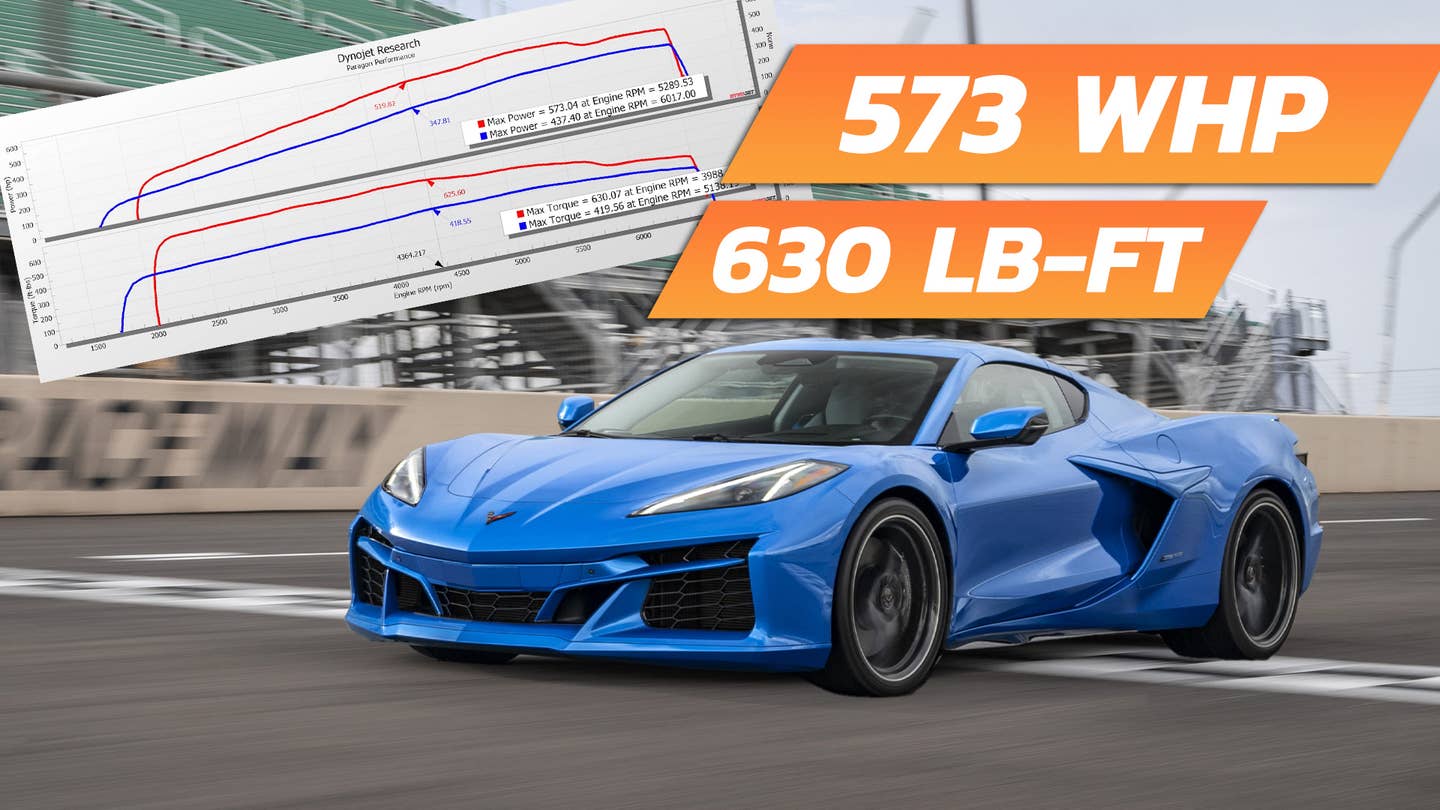The first-ever hybrid ‘Vette packs more of a punch than Chevy lets on.

The Chevy Corvette E-Ray uses the same 6.2-liter naturally aspirated V8 as the entry-level Stingray, but with some help from an electric motor on the front axle. The automaker claims that combination makes a combined 655 horsepower and 592 lb-ft of torque. Paragon Performance’s all-wheel-drive dyno tells a better story, though.
At the wheels, a stock Corvette E-Ray made 573 hp and 630 lb-ft of torque in Paragon’s testing. That’s 14% less horsepower than Chevrolet says, though that’s typical drivetrain loss for a rear-wheel-drive car with a dual-clutch transmission. So, the advertised figure is pretty spot on there. It’s the torque number that’s shocking, however, as it’s a 6.4% increase at the wheels from what General Motors claims. That might help explain the E-Ray’s ability to hit 60 mph from a standstill in just 2.5 seconds.
How do the E-Ray’s actual figures compare to a stock Corvette Z06? The Z06 makes more power, with 610 wheel-horsepower, but it only begins to best the E-Ray at around 7,500 rpm—2,000 rpm higher than where the E-Ray hits peak power. The Z06 also makes considerably less torque, with a 424 lb-ft of peak wheel torque. And once again, that torque kicks in far later in the rev range. So, in almost all real-world circumstances, an E-Ray is going to be quicker than a Z06.
We already knew the Corvette E-Ray was a bit of an overperformer. After all, it was The Drive’s Best Performance Car of 2023. But it’s nice to see our suspicions confirmed with science and graphs.

Got tips? Send ’em to tips@thedrive.com


